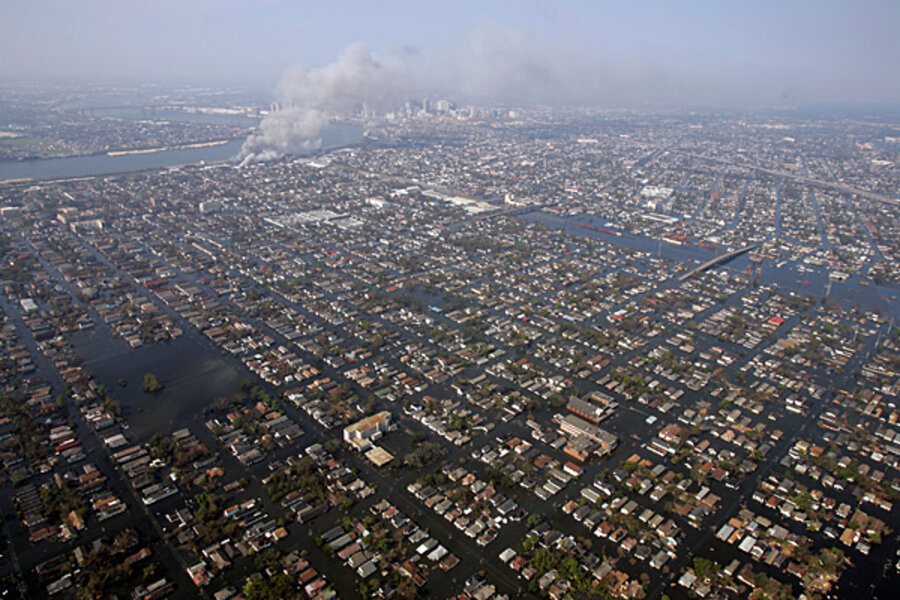With an estimated cost of $148.8 billion, hurricane Katrina is far and away the most expensive natural disaster in modern US history.
Storm surges reached 20 to 30 or more feet along Mississippi and Louisiana. Gulf oil production dropped by 95 percent (a drop of 1.4 million barrels per day). Over 1.7 million people lost power.
Messages for help were written on rooftops. New Orleans' Ninth Ward virtually disappeared under water. Victims huddled in the Louisiana Superdome. Fatalities totaled 1,833.
The fallout spilled over into political and even cultural spheres as government agencies drew criticism for what many perceived as a slow and unprepared response. The disproportionate impact on poor, rural, and minority communities exacerbated racial and socioeconomic rifts.
Katrina's impact continues today as communities and governments prepare for and respond to so-called "billion-dollar weather" events.
For more information, visit the National Oceanic and Atmospheric Administration's website.







